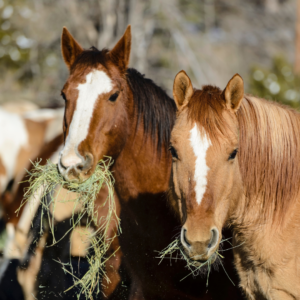 Many different types of hay are acceptable in when choosing hay for horses programs. Local availability often influences the popularity of a particular variety of hay in a geographical area. For example, coastal bermudagrass hay is popular in the southern United States where it is well adapted, but it is rarely fed in the northern U.S. where it is hard to grow.
Many different types of hay are acceptable in when choosing hay for horses programs. Local availability often influences the popularity of a particular variety of hay in a geographical area. For example, coastal bermudagrass hay is popular in the southern United States where it is well adapted, but it is rarely fed in the northern U.S. where it is hard to grow.
Some of the most popular hay choices for horses are alfalfa, timothy, orchardgrass and alfalfa-grass mixes. Somewhat less popular but still common are red clover, fescue, and bermudagrass. Several factors should be considered when deciding what type of hay to feed. Most important is cleanliness, but nutrient value and the type of horse being fed should also be considered.
The Best Hay Is Clean Hay
Without a doubt the best hay for horses is clean hay. Hay that is moldy or dusty should not be fed to horses, even when the amount of mold or dust appears to be minor. Any hay (alfalfa, timothy, clover, fescue) that contains dust or mold can inflame the respiratory tract and impair breathing ability.
Many horses develop permanent lung damage after consuming moldy or dusty hay. This chronic lung damage, commonly referred to as heaves, affects the horses ability to breathe normally during exercise. In severe cases heaves impairs the horses ability to breathe normally at rest. Once a horse has been sensitized to hay dust, mold, or pollen, it may react even when clean hay is fed. Mold can have other detrimental effects on the horse as well, such as causing digestive upsets.
Factors Affecting the Nutrient Value of Hay
Table 1 illustrates the nutritional differences among several hays commonly fed to horses. Legumes, such as alfalfa and red clover, are typically much higher in protein and calcium than grass hays (timothy, orchardgrass, bermudagrass). Legumes may also be higher in energy and total digestible nutrients. Red clover has a good nutrient profile, but it is sometimes affected by a mold that causes slobbering in horses. The slobbering does not appear to harm the horse, but most horse handlers find it offensive. Red clover is often dusty because of fine hairs that are dislodged from the stem.
Alfalfa
Alfalfa is the most common legume hay used in Central Kentucky. When the price per ton of various hays is similar, alfalfa is usually the best value because it has more nutrients. In addition, because alfalfa tends to be more palatable than other hay types, horses will usually waste less.

Table 1
The biggest variable affecting nutrient content within a type of hay is the stage of maturity at harvest. Very early maturity hay often has a soft texture, is very leafy, and has a high nutrient density and palatability. Plants harvested in early maturity are cut soon after the seedheads emerge (grasses) or before the plant begins to bloom (legumes).
Plants harvested in late maturity will have coarse, thick stems and less leaf than plants harvested in early maturity. The older the plant is at the time of harvest, the lower the nutrient value and the palatability. The best way to evaluate nutrient value is to have a chemical analysis performed. To get an accurate analysis, at least 20 bales of hay should be sampled with a forage core sampler. A typical analysis will determine moisture, crude protein, neutral and acid detergent fiber levels (which help determine energy content), calcium, and phosphorus. To get more information about analyzing your hay, contact your county Extension office.
Matching Hay Type to Horse Type
Not all horses have the same nutrient needs, so naturally not all horses have the same hay needs. A hay that is suitable for a mature Quarter Horse gelding used for occasional riding may not be suitable for an 8-month-old thoroughbred. The best hay for any horse depends on the needs of that horse.
Barren mares, retirees, and horses used for light recreational riding have relatively low nutrient requirements compared to growing horses, lactating mares, and performance horses. Lateor mid-maturity alfalfa or mid-maturity grass hays are often very suitable for horses with low nutrient requirements (Table 2). In fact, mid-to-late maturity hay is usually a more desirable feed source for horses with lower nutrient requirements because the horses can eat more hay to satisfy their appetites without getting too fat.
Early-maturity alfalfa hay is usually not the best hay choice for horses with low nutrient requirements. When early-maturity alfalfa hay is fed to horses with low nutrient requirements, less hay is necessary to meet nutrient requirements. This may seem like an advantage because less hay is used each day. However, restricting hay intake can have some detrimental effects. If a horses appetite is not satisfied, it may be inclined to redirect chewing needs to other objects such as fences, stalls, or trees. Alternatively, if the intake of very nutritious hay is not restricted, excess nutrient intake and weight gain will occur.
Many horses have high nutrient needs; consequently, early maturity alfalfa hay does have a place in horse feeding programs. Early-maturity alfalfa is an excellent hay choice for growing horses and lactating mares. Early-maturity hays are more palatable than late-maturity hays, so they are useful for horses with poor appetites.
Is Hay a Nutritionally Balanced Diet?
For horses with low nutrient requirements, mid-maturity hay can meet most of the nutrient needs. Hay is low in sodium and chloride, so a salt block is necessary. Some horses may need a minimal amount of grain to maintain body weight if late maturity hay is fed. Lactating mares, growing horses, and horses in moderate to heavy work usually cannot eat enough hay to meet their nutrient requirements and will almost always need some grain in their diets.

Table 2
The type of hay used will affect the amount and type of grain that is needed by horses (Table 2). When early maturity hays are fed, the amount of grain in the diet can often be reduced. One of the big advantages of alfalfa is the amount of protein it provides. When alfalfa hay is fed, the amount of crude protein provided by the grain can be reduced. For example, if a lactating mare is receiving mid-maturity timothy hay, a grain mix containing 14 to 16% crude protein will be needed. If alfalfa is fed, the concentration of protein in the grain can be reduced to 12%. Lowerprotein grain mixes cost less than high-protein grain mixes.
Alfalfa is also high in calcium, which makes it better to feed with plain grains such as corn or oats, which are deficient in calcium. If young horses are fed a grass hay/oats combination, the diet will probably be deficient in calcium and several other minerals. If alfalfa hay is substituted for the grass hay, the calcium requirement will usually be met.
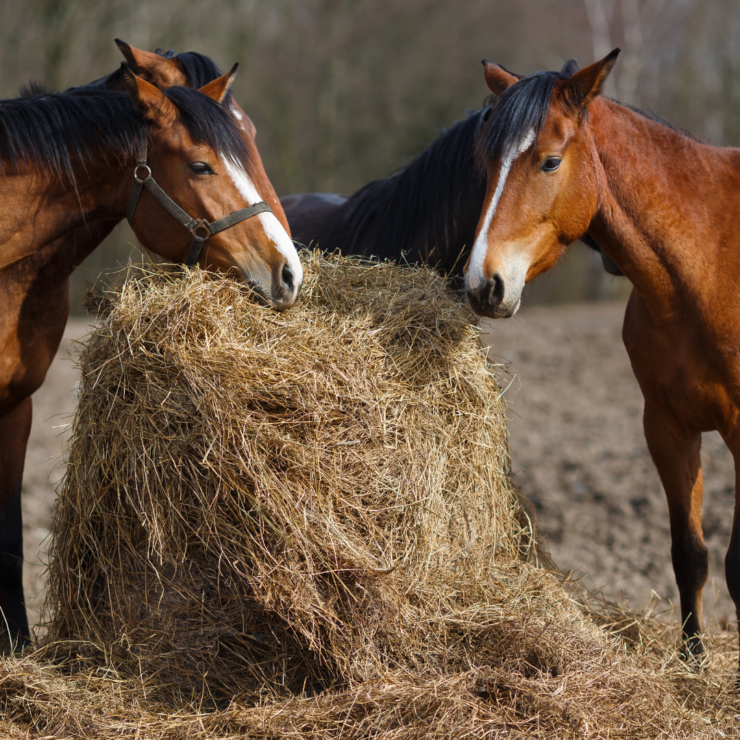 Buy Good Hay and Feed More of It!
Buy Good Hay and Feed More of It!
High grain intakes have been implicated as a risk factor in equine colic, which is a good reason to feed as much hay as possible. Diets with low levels of hay have also been related to an increased incidence of stall vices such as cribbing and wood chewing. In addition, the most economical feeding programs maximize forage intake and then add grain or other feeds to meet any unfulfilled requirements.
The actual amount of hay that any horse will consume depends on its body weight and physiologic class (growing, lactating, working) and the type of hay available. Table 2 gives some examples of hay intakes expected under different conditions. It is rarely practical to weigh hay for every horse every day, so the best management practice is to feed enough hay so there is always a little bit left. To get the most value from hay, it is advisable to put it in a hay feeder of some type.
Hay feeders reduce the amount of hay that horses waste. In many situations, hay feeders will cut waste by 20% or more. For many operations, a hay feeder will pay for itself in just a year or two. To determine the number of hay racks to use, observe the horses for three or four days after a hay rack is placed in a paddock or field. If all horses eat quietly at the hay rack at the same time, then the number of hay racks is appropriate for the number of horses. If some horses must wait their turn, then more hay racks are needed.
Frequently Asked Questions about Selecting and Feeding Hay
“Can I feed tall fescue hay to my horses?”
Tall fescue is a common and useful pasture plant. It can also be harvested for hay. Unfortunately, most tall fescue hay is harvested at a late stage of maturity when palatability and nutrient value are low. Horses can be expected to waste about twice as much tall fescue hay as alfalfa hay.
Much of the tall fescue grown in the southeastern U.S. is infected with an endophytic fungus. The fungus increases the hardiness of the plant but has detrimental effects on some animals. Broodmares consuming endophyte-infected tall fescue often have abnormally long gestations and foaling problems. Foals may be born weak, and some mares will fail to produce milk. Because of the potential for problems, mares should not be fed tall fescue hay or pasture during the last 90 days of gestation.
“Is alfalfa too rich for my horse?”
While alfalfa hay is a more nutrient-rich feed than most other hays, it is not any richer than many other feeds commonly used for horses. For example, the horses most natural feedstuff, good quality pasture, is often higher in calories and protein than alfalfa hay. Leafy, rapidly growing cool-season grass pasture contains 18 to 20% crude protein on a dry matter basis. By comparison, mid-maturity alfalfa hay will contain 16 to 18% crude protein on a dry matter basis.
For horses that are relatively inactive and are not growing or lactating, mid- to latematurity alfalfa hay will be a more appropriate feed than early-maturity alfalfa. Alfalfa is a good feed for lactating mares and growing horses because of its high nutrient value.
“Will the high level of protein in alfalfa damage my horses kidneys?”
Feeding programs based on alfalfa hay often provide more protein than mature horses need. However, there is no evidence to suggest that a moderate dietary excess of protein is detrimental to healthy, mature horses. Protein is made up of amino acids, which are composed of carbon, hydrogen, oxygen, and nitrogen.
When horses (or humans) consume more protein than they need, the carbon, hydrogen, and oxygen portion of the amino acids is used for energy and the excess nitrogen is excreted in the urine. Thus, it is possible that horses consuming high-protein diets will drink more water and urinate more than horses consuming lowerprotein diets, but there is no reason to believe that a horses kidneys will be damaged when this occurs.
“Is preservative-treated hay safe for my horse?”
The most common hay preservative is an organic acid preparation containing buffered propionic acid. Preservatives are used to prevent mold formation and produce a cleaner hay. A study performed at Cornell University found that, when given a choice, horses preferred alfalfa that was not treated with a preservative over alfalfa that had been treated with a mixture of acetic and propionic acid.
A study conducted at the University of Illinois found that yearlings receiving hay treated with this preservative consumed just as much and gained just as much over a 1- month feeding period as yearlings consuming untreated hay. Clinical measures of well-being such as serum enzyme levels were not affected by consumption of preservative-treated hay, indicating the hay had no negative effects on the horses.
“Can I feed hay cubes instead of baled hay?”
Hay cubes are an acceptable alternative to baled hay. Voluntary consumption may be higher when cubes are fed than when long hay is fed. There are two potential advantages of cubes over baled hay:
- hay cubes usually have less dust than long hay
- there may be less waste when hay cubes are fed. Hay cubes are usually more expensive than baled hay.
“Is it okay to feed hay that has been stored in the barn for a year or more?”
As long as hay has been stored in a barn, it is suitable for feeding for a long time after harvest. The amounts of energy, protein, calcium, and phosphorus in a bale of hay in dry storage are basically the same after two years of storage as they are after two months of storage. One nutrient that does change with storage is vitamin A.
However, the greatest loss of vitamin A activity occurs right after harvest, and the amount of change after 6 months is relatively small. Long-term storage may increase the dryness of hay. Hay that is very dry will be brittle and sustain more leaf shatter, so wastage during feeding may go up. Hay that has been stored for a long time may also have an increased level of dustiness, probably due to the increased dryness.
“Can large round bales be used for horses?”
Yes and no. Large round bales that are stored in a barn can be used for horses if they are free of mold. However, round bales should be used in situations where there will be enough horses consuming hay to use up the bale in few days. When a round bale is in a paddock with only one or two horses, it will be exposed to the elements for an extended period, and mold formation is likely.
In addition, the horses may overeat. Round bales that have been stored outside without cover usually have a large amount of mold spoilage and should not be used for horses. Round bales can be a convenient way to feed large groups of horses, but the amount of hay wasted is probably higher than with conventional bales.
“How much hay should I order at one time?”
Order only as much hay as you can store in a dry, protected environment. If hay is the only forage source available to your horse (no pasture), estimate your hay needs at 600 to 700 pounds of hay per horse per month. Large horses and lactating mares will eat more than this, and ponies or weanlings will eat less.
Horses that are housed outside in the winter will also need more. Try to buy hay by the ton. Buying hay by the bale is not always economical, and it is hard to compare prices because not all bales weigh the same. If one vendor sells his hay for $3.00 per bale and another sells for $2.50 per bale, the second hay may seem like a better buy. But if the first vendor has 60-pound bales and second vendor has 40-pound bales, the first hay really costs $100/ton and the second hay costs $125/ton.
Resources:
Educational programs of the Kentucky Cooperative Extension Service.
Lawrence, L.M., K.J. Moore, H.F. Hintz, E.H. Jaster, and L.
Wischover. 1987. Acceptability of alfalfa hay treated with
an organic acid preservative for horses. Can. J. Anim. Sci.
67:217.
National Research Council. 1989. Nutrient Requirements of
Horses. National Academy Press, Washington, D.C.
Raymond, S.L., E.F. Curtis, L.M. Winfield, and A.F. Clarke.
1997. A comparison of respirable particles associated with
various forage products for horses. Equine Pract. 19:23.
Russell, M.A., and G.A. Rich. 1993. Selecting hay for horses.
In: The Horse Industry Handbook, American Youth Horse
Council, Lexington, Ky.
Todd, L.K., W.C. Sauer, R.J. Christopherson, R.J. Coleman,
and W.R. Caine. 1995. The effect of feeding different forms
of alfalfa on nutrient digestibility and voluntary intake in
horses. J. Anim. Physiol. (Anim. Nutr.) 73:1.
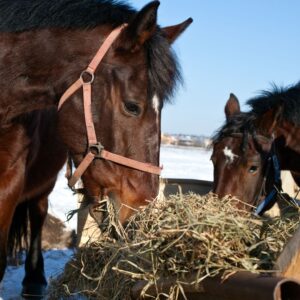 Steamed Hay for Horses: Protein Content Examined.
Steamed Hay for Horses: Protein Content Examined. 
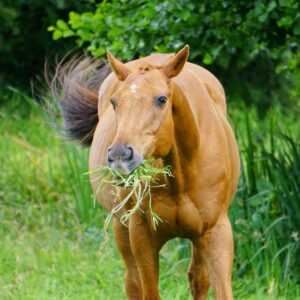 Benefits of Integrating Warm-Season Grasses into Pastures: Warm-season grasses help minimize the “summer slump” in pastures dominated by cool-season grasses such as tall fescue, orchardgrass, and Kentucky bluegrass. Specifically, warm-season grasses like Bermuda grass and crabgrass improve pasture yield in hot, dry months. Research by Rutgers University identified two additional benefits of warm-season grasses. (1) creation of desirable forage composition for certain horses, and (2) beneficial shifts in the equine intestinal microbiome.*
Benefits of Integrating Warm-Season Grasses into Pastures: Warm-season grasses help minimize the “summer slump” in pastures dominated by cool-season grasses such as tall fescue, orchardgrass, and Kentucky bluegrass. Specifically, warm-season grasses like Bermuda grass and crabgrass improve pasture yield in hot, dry months. Research by Rutgers University identified two additional benefits of warm-season grasses. (1) creation of desirable forage composition for certain horses, and (2) beneficial shifts in the equine intestinal microbiome.*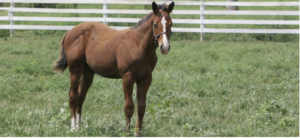 Managing Feed for Weanling and Yearling Horses: Young horses need good-quality feeds to meet their nutrient requirements for growth. In addition, free-choice exercise in large paddocks. Weanlings and yearlings have high requirements for energy, protein, amino acids and minerals in order to grow optimally. If you are using a commercial mixed feed, make sure it is formulated for the growing horse.
Managing Feed for Weanling and Yearling Horses: Young horses need good-quality feeds to meet their nutrient requirements for growth. In addition, free-choice exercise in large paddocks. Weanlings and yearlings have high requirements for energy, protein, amino acids and minerals in order to grow optimally. If you are using a commercial mixed feed, make sure it is formulated for the growing horse. Many different types of hay are acceptable in when choosing hay for horses programs. Local availability often influences the popularity of a particular variety of hay in a geographical area. For example, coastal bermudagrass hay is popular in the southern United States where it is well adapted, but it is rarely fed in the northern U.S. where it is hard to grow.
Many different types of hay are acceptable in when choosing hay for horses programs. Local availability often influences the popularity of a particular variety of hay in a geographical area. For example, coastal bermudagrass hay is popular in the southern United States where it is well adapted, but it is rarely fed in the northern U.S. where it is hard to grow.

 Buy Good Hay and Feed More of It!
Buy Good Hay and Feed More of It!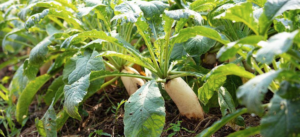 Use of Cover Crops in Horse Pastures:
Use of Cover Crops in Horse Pastures: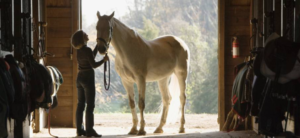 Horse Management for the Spring Season: Do you ride all winter, no matter how deep the snow gets, or do you hang up your saddle at the first cool breeze in autumn? Do you pull your horse’s shoes, blanket him, or keep him in the barn during the cold months? Do you cut his grain ration when he’s not working, or feed more hay to keep him warm? If the winter season has involved any modifications in your horse’s exercise level or feeding plan, you will need to consider the following points as you bring the horse back into work in the spring.
Horse Management for the Spring Season: Do you ride all winter, no matter how deep the snow gets, or do you hang up your saddle at the first cool breeze in autumn? Do you pull your horse’s shoes, blanket him, or keep him in the barn during the cold months? Do you cut his grain ration when he’s not working, or feed more hay to keep him warm? If the winter season has involved any modifications in your horse’s exercise level or feeding plan, you will need to consider the following points as you bring the horse back into work in the spring.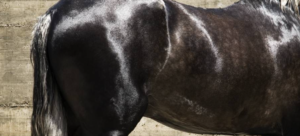 Feed Management to Minimize the Risk of Impaction in Horses: Winter, with its icy water sources and lowered equine activity levels, is one of the riskiest times for horses that tend to develop intestinal impaction. Fresh grass has been replaced in the diet by dry hay; horses tend to drink less when offered very cold water; and with a break in regular training and exercise, they may not sweat enough to feel thirsty. These are all contributing factors to impaction colic. Above all, because they are all conducive to slower movement of ingested material through the digestive tract.
Feed Management to Minimize the Risk of Impaction in Horses: Winter, with its icy water sources and lowered equine activity levels, is one of the riskiest times for horses that tend to develop intestinal impaction. Fresh grass has been replaced in the diet by dry hay; horses tend to drink less when offered very cold water; and with a break in regular training and exercise, they may not sweat enough to feel thirsty. These are all contributing factors to impaction colic. Above all, because they are all conducive to slower movement of ingested material through the digestive tract.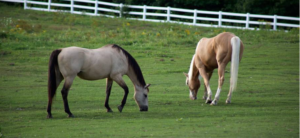 Springtime Weight Gain in Horses: Winter can be hard on horses. When spring arrives, it is not unusual to find that a horse has dropped weight during the coldest months. When the mercury drops, a horse requires more energy to maintain body temperature. Winter is especially challenging for senior horses and young horses, who have a harder time maintaining body temperature. A sound nutrition program and suitable exercise can help remedy loss of condition as winter turns to spring.
Springtime Weight Gain in Horses: Winter can be hard on horses. When spring arrives, it is not unusual to find that a horse has dropped weight during the coldest months. When the mercury drops, a horse requires more energy to maintain body temperature. Winter is especially challenging for senior horses and young horses, who have a harder time maintaining body temperature. A sound nutrition program and suitable exercise can help remedy loss of condition as winter turns to spring.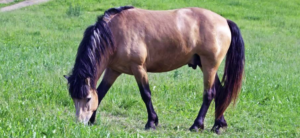 Toxic Plants for Horses: Meadow Saffron – Why are horses entice by it? Some owners find tranquility in watching their horses graze. Others size up the same scene with uncertainty, even worry, as they tally the potential dangers that lurk in fields and fencerows: buttercups, acorns, red maple leaves, and black walnut bark. Which level of concern is most fitting? A new study on “poison preference” suggests that the reality may lie somewhere between blissful ignorance and unflagging vigilance.*
Toxic Plants for Horses: Meadow Saffron – Why are horses entice by it? Some owners find tranquility in watching their horses graze. Others size up the same scene with uncertainty, even worry, as they tally the potential dangers that lurk in fields and fencerows: buttercups, acorns, red maple leaves, and black walnut bark. Which level of concern is most fitting? A new study on “poison preference” suggests that the reality may lie somewhere between blissful ignorance and unflagging vigilance.*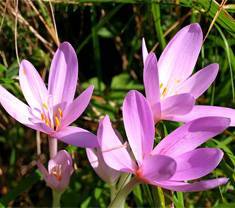 Above all, the meadow saffron is not a true crocus, like those that come as signals of spring. As meadow saffron grows, broad leaves erupt from the ground, similar to those of the more familiar garden tulip. In early fall, once the leaves have died back, flowers erupt from the corms. As this photograph taken by Enrico Blasutto shows, each stalk produces a single flower that is typically light pink or purple. All parts of the plant are toxic.
Above all, the meadow saffron is not a true crocus, like those that come as signals of spring. As meadow saffron grows, broad leaves erupt from the ground, similar to those of the more familiar garden tulip. In early fall, once the leaves have died back, flowers erupt from the corms. As this photograph taken by Enrico Blasutto shows, each stalk produces a single flower that is typically light pink or purple. All parts of the plant are toxic.